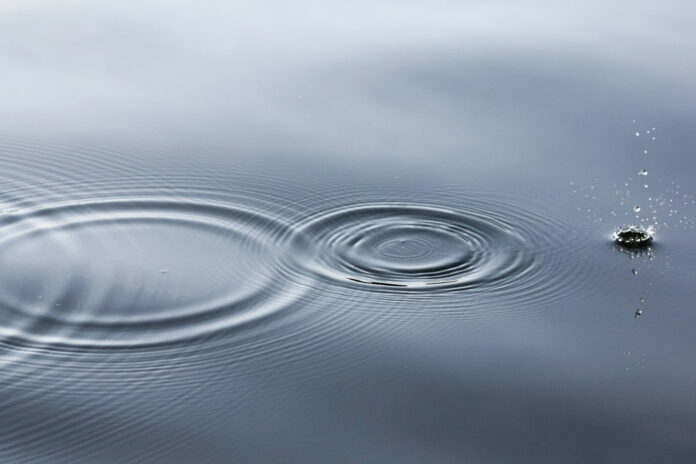Water is the lifeblood of our planet, essential for all forms of life. Yet, with the rapid pace of industrialization and population growth, water pollution has become a critical environmental issue. Traditional water treatment methods often rely on chemical processes that can be expensive and environmentally harmful. In response, green water cleaning technologies have emerged as a sustainable alternative, offering eco-friendly solutions to purify water without further harming the ecosystem.
These innovative technologies harness natural processes to remove contaminants from water, reduce reliance on chemicals, and minimize energy consumption. They are designed to mimic nature’s own purification methods, such as filtration through soil or the cleansing action of wetlands. By integrating these green technologies into our water management systems, we can protect our water reservoirs and ensure a clean water supply for future generations.
Revolutionary Innovations in Water Treatment: Harnessing Nature’s Power to Cleanse Reservoirs
In the quest for sustainable water treatment, scientists and engineers have developed revolutionary innovations that harness the power of nature to cleanse polluted reservoirs. These include constructed wetlands, floating treatment wetlands, and biofiltration systems, all of which utilize plants and microorganisms to break down pollutants naturally.
Constructed wetlands, for example, are engineered systems that replicate the functions of natural wetlands. They provide a habitat for a diverse range of microorganisms and plants that work together to filter and degrade contaminants. Floating treatment wetlands take this concept a step further by introducing floating mats that support plant life, which in turn absorbs and breaks down pollutants from the water surface.
Biofiltration systems use natural materials, such as sand, gravel, and plant roots, to filter out impurities. These systems are not only effective at removing contaminants but also promote groundwater recharge and habitat creation. By leveraging these nature-inspired technologies, we can significantly reduce the environmental impact of water treatment and support biodiversity.
The Role of Bioremediation in Restoring Polluted Water Bodies
Bioremediation is a process that uses living organisms, primarily bacteria, fungi, and plants, to degrade or neutralize contaminants in soil and water. This green technology is particularly effective in restoring polluted water bodies, as it can target a wide range of organic pollutants, heavy metals, and nutrients that contribute to water quality degradation.
One of the key advantages of bioremediation is its ability to transform harmful substances into less toxic or non-toxic forms, often as part of the natural metabolic processes of the organisms involved. For instance, certain bacteria can convert hazardous chemicals like hydrocarbons into harmless substances such as carbon dioxide and water.
Phytoremediation, a subset of bioremediation, involves the use of plants to absorb, accumulate, and detoxify pollutants. Some plants have remarkable abilities to uptake heavy metals and other contaminants, storing them in their tissues, which can then be harvested and disposed of safely. Bioremediation is not only cost-effective but also promotes ecological balance by enhancing the natural self-cleaning ability of ecosystems.
Cutting-Edge Filtration Systems: Eco-Friendly Solutions for Water Pollution
In the realm of green water cleaning technologies, cutting-edge filtration systems stand out as eco-friendly solutions for tackling water pollution. These systems often employ advanced materials and designs to enhance the efficiency of natural filtration processes.
One such innovation is the use of biochar, a carbon-rich material produced from organic waste through pyrolysis. Biochar has a porous structure and a high surface area, making it an excellent filter medium for removing organic pollutants and heavy metals from water. It can be used in biofiltration systems or as a soil amendment to prevent agricultural runoff from contaminating water sources.
Membrane technology is another area where significant advancements have been made. Nanofiltration and ultrafiltration membranes can remove a broad spectrum of contaminants, including pathogens, without the need for harsh chemicals. These membranes are becoming increasingly energy-efficient and cost-effective, making them a viable option for large-scale water treatment.
Algae-Based Remediation: A Green Solution to Nutrient Overload in Water Sources
Algae-based remediation is a promising green solution to the problem of nutrient overload in water sources, a common issue resulting from agricultural runoff and wastewater discharge. Excessive nutrients, particularly nitrogen and phosphorus, can lead to eutrophication, causing harmful algal blooms and dead zones in aquatic ecosystems.
Algae can play a beneficial role in addressing this challenge. Certain algae species are highly efficient at uptaking excess nutrients from water. By cultivating these algae in controlled environments, such as algal turf scrubbers or photobioreactors, we can harness their natural nutrient-removal capabilities.
Once the algae have absorbed the nutrients, they can be harvested and used as biofertilizers or converted into biofuels, thus closing the loop in a sustainable cycle. This approach not only cleans the water but also provides a renewable source of energy and agricultural inputs, showcasing the potential of circular economy principles in water treatment.
The Future of Clean Water: How Green Technologies Are Shaping Environmental Stewardship
The future of clean water is inextricably linked to the advancement of green technologies. As environmental stewardship becomes a global priority, these sustainable solutions are gaining traction and shaping the way we manage our water resources.
Innovations in green water cleaning technologies are continuously evolving, driven by research and the need to address emerging contaminants. The integration of smart technology, such as sensors and automation, is enhancing the efficiency and adaptability of these systems, allowing for real-time monitoring and response to changing water quality conditions.
Public awareness and policy support are also critical in promoting the adoption of green water cleaning technologies. As more communities and industries recognize the long-term benefits of sustainable water management, investment in these technologies is likely to increase, leading to wider implementation and further innovation.
Green water cleaning technologies offer a beacon of hope for the future of our water reservoirs. By embracing these eco-friendly solutions, we can protect our precious water resources, support biodiversity, and ensure a clean and healthy environment for all.
